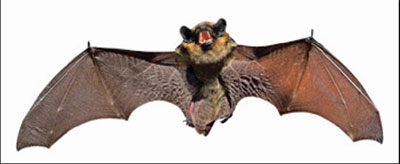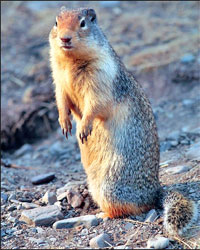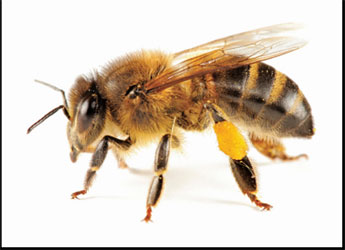In
focus
Weather prophets in the animal kingdom
  The
weather has a great impact on our lives. We are always alert to the
changing weather patterns because our entire lives are virtually
governed by it. So, there are many people who study the changing weather
and alert us about these changes and their effects. We call them weather
forecasters or meteorologists. The
weather has a great impact on our lives. We are always alert to the
changing weather patterns because our entire lives are virtually
governed by it. So, there are many people who study the changing weather
and alert us about these changes and their effects. We call them weather
forecasters or meteorologists.
However, the ability to forecast the weather is not limited to human
meteorologists. There are many members in the animal kingdom who are
able to predict the weather. In fact they are better at doing this
because animals are more sensitive to various meteorological cues,
including those of an electromagnetic nature.
Some of the animals who are recognised as weather prophets in the
animal kingdom are the bats, frogs, ground squirrels, birds, moths and
many other insects.
You may be aware that bats are creatures that generally live in deep,
dark caves or other such dark places and become active in the nights.
Researchers had been puzzled for a long time as to how insect eating
bats knew exactly when, the rains that would result in bringing swarms
of insects out into the open, will occur for them to feast on. Studies
had eventually revealed that these bats were able to sense a specific
meteorological stimulus to which the insects respond.
Flying insects are most common when air (barometric) pressure was
low, except of course during heavy showers. So, bats have been noted to
come out in swarms when the air pressure drops, indicating impending
rain.
|

Bats can detect impending rain. |
How are bats able to sense this change in the weather? Researchers
believe that a bat's barometric sense may be due to the Vital organ in
the middle ear. Bats are the only mammals with this organ.
Weather forecasters among insects such as the bees too depend heavily
on electromagnetic sensitivity to predict changes in the weather. For
instance, bees are very responsive to electrical discharges in the air
that occur just before a thunderstorm that would ultimately result in
lightning. Electromagnetic waves are in turn generated by lightening.
These waves stimulate the bees to quickly get back to their hives
before the storm comes. So, if you see bees suddenly rushing back to
their hives you can be sute that they are trying to escape from a
thunderstorm.
|

Frogs were kept as living barometers. |
|

Ground squirrels can detect thunderstorms
before us. |
Birds too use electromagnetic cues to check the weather. The swift is
a bird which spends most of its life flying, so it needs to be able to
predict the weather to avoid bad conditions.
It does so by sensing the atmospheric ionization, especially the
positive ion accumulation in the atmosphere that precedes thunderstorms.
Both positive and negative ions exist in the air.
An ion in simple terms is an atom or molecule that has gained or lost
an electron. The swift can detect an electrical storm before it arrives,
and avoid flying in that path.

�e swi can detect an electrical
storm before it arrives. |

Bees are very responsive to electrical
discharges in the air that occur just
before a thunderstorm. |
Animals such as ground dwelling creatures, elephants and birds can
detect the sound of thunder better than humans.
Why? Because they can detect the infrasonic component that we cannot
hear. Since infrasonic sound tends to travel greater distances through
the air than the wavelengths audible to us, animals can hear an
approaching thunderstorm long before us. Some animals can even hear the
infrasonic component of air turbulence caused by rain clouds.
So, it is an established fact that animals are good at predicting the
weather. Do you know that once frogs were kept as living barometers? It
was found that the pigment cells in their skins expanded due to the
humidity when rain was due, making the frogs look darker.
It is also said that a 19th century inventor once used leeches to
ring a warming bell when a storm was on its way? It is believed that he
was inspired by a legend that claimed leeches stay at the bottom of
ponds in sunny weather and rise to the top when a storm is about to
begin. So, he constructed a vertical tank of leeches with a tiny bell
that was triggered whenever the leeches rose to the top. |



